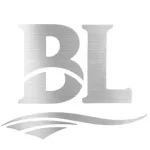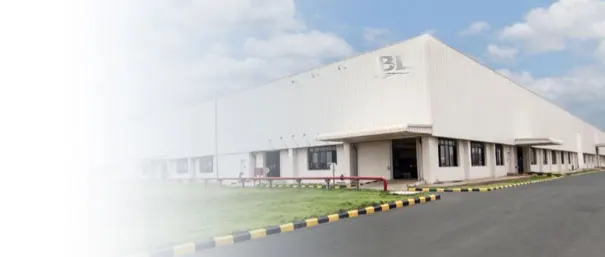ISO X2CrNiMoN22-5-3 (1.4462 / UNS S31803) Duplex Stainless Steel: High-Strength Corrosion Resistance for Harsh Environments
ISO X2CrNiMoN22-5-3, commonly designated as 1.4462 or UNS S31803, is a nitrogen-enhanced duplex stainless steel combining austenitic and ferritic microstructures in a 50:50 ratio. This grade delivers exceptional strength (twice that of 316L), superior resistance to stress corrosion cracking (SCC), and excellent pitting/crevice corrosion performance in chloride-rich environments. Its balanced composition of 22% chromium, 5% nickel, 3% molybdenum, and 0.18% nitrogen makes it ideal for offshore oil/gas, chemical processing, and desalination plants where conventional stainless steels fail. This article explores its metallurgical properties, fabrication guidelines, and industry-specific applications.
1. Chemical Composition (EN 10088-3 Standard)
| Element | Content Range | Function |
|---|---|---|
| Carbon (C) | ≤ 0.030% | Minimized to prevent intergranular carbide precipitation and maintain weldability |
| Chromium (Cr) | 21.00 – 23.00% | Forms Cr₂O₃ passive film; primary corrosion resistance contributor |
| Nickel (Ni) | 4.50 – 6.50% | Balances austenite/ferrite phases; enhances toughness and chloride resistance |
| Molybdenum (Mo) | 2.50 – 3.50% | Improves pitting resistance equivalent number (PREN ≥ 32) |
| Nitrogen (N) | 0.10 – 0.22% | Stabilizes austenite phase; strengthens via interstitial solid solution |
| Manganese (Mn) | ≤ 2.00% | Deoxidizer; partial nickel substitute for cost efficiency |
| Silicon (Si) | ≤ 1.00% | Enhances oxidation resistance; improves casting fluidity |
| Phosphorus (P) | ≤ 0.030% | Impurity; controlled to prevent embrittlement |
| Sulfur (S) | ≤ 0.020% | Minimized to avoid hot cracking during welding |
| Ferrite Content | 35 – 65% | Dual-phase microstructure ensures high strength and SCC resistance |
2. Mechanical and Physical Properties
| Property | Value (Annealed Condition) | Test Standard |
|---|---|---|
| Tensile Strength (Rm) | 620 – 880 MPa | EN ISO 6892-1 |
| Yield Strength (Rp0.2) | ≥ 450 MPa | EN ISO 6892-1 |
| Elongation (A5) | ≥ 25% | EN ISO 6892-1 |
| Hardness (HB) | ≤ 290 | EN ISO 6506-1 |
| Impact Energy (Charpy V) | ≥ 100 J at -46°C | EN ISO 148-1 |
| Density | 7.8 g/cm³ | — |
| Thermal Conductivity | 15 W/m·K (at 20°C) | — |
| Coefficient of Thermal Expansion | 13.7 µm/m·K (20-100°C) | — |
3. Corrosion Resistance Performance
- Pitting Resistance (PREN): PREN = %Cr + 3.3×%Mo + 16×%N ≥ 32 (superior to 316L’s PREN of 24-26)
- Critical Pitting Temperature (CPT): ≥ 35°C in 1M NaCl (ASTM G48 Method A)
- Stress Corrosion Cracking (SCC): Resistant in chloride environments up to 200°C; no SCC in 40% CaCl₂ at 100°C
- Crevice Corrosion: Withstands 22°C in 6% FeCl₃ (ASTM G48 Method B) without initiation
- Uniform Corrosion: Corrosion rate < 0.1 mm/year in 10% H₂SO₄ at 60°C
- Intergranular Corrosion: Passes ASTM A262 Practice E (120h in CuSO₄-H₂SO₄)
4. Fabrication and Processing Guidelines
- Hot Forming: Perform at 1000-1150°C; avoid dwelling below 950°C to prevent sigma phase formation. Air cool after forming.
- Cold Forming: Requires 2-3× higher force than 304 due to high yield strength. Use over-sized tooling; intermediate annealing may be needed for complex shapes.
- Machining: Use carbide tools (ISO K10-K20); lower speeds (60-80 m/min) and higher feeds than austenitic grades. Rigid setups to minimize vibration.
- Welding:
- Filler Metal: ER2209 (UNS S39209) for matching composition
- Heat Input: 0.5-2.5 kJ/mm; avoid excessive heat to prevent ferrite growth
- Preheat/Interpass: Not required for thin sections (< 10mm); max 150°C for thick sections
- Post-Weld: No PWHT needed; pickling (HNO₃ + HF) to restore corrosion resistance
- Heat Treatment: Solution anneal at 1020-1100°C followed by water quenching. Avoid temperatures between 300-1000°C to prevent embrittlement.
5. Industry-Specific Applications
Oil & Gas Exploration
Subsea pipelines, umbilical tubes, and topside process equipment in H₂S/CO₂ environments (NACE MR0175/ISO 15156 compliant). Resists sulfide stress cracking (SSC) at partial pressures up to 1 bar.
Chemical Processing
Pressure vessels, reactors, and heat exchangers handling acetic acid, phosphoric acid, and chloride-contaminated media. Used in urea production (Stamicarbon-approved) and sulfuric acid coolers.
Desalination Plants
Seawater reverse osmosis (SWRO) membranes, brine heaters, and high-pressure pumps. Withstands 60,000 ppm chloride at 40°C without pitting (vs. 316L’s 1,000 ppm limit).
Pulp & Paper Industry
Bleach plant equipment, digesters, and black liquor recovery boilers. Resists polythionic acid stress corrosion cracking (PASCC) during shutdowns.
Marine & Offshore
Shipbuilding (ballast water systems, fire-fighting pipes), offshore platforms, and FPSO modules. Certified by DNVGL for seawater cooling systems.
Pollution Control
Flue gas desulfurization (FGD) scrubbers, electrostatic precipitators, and wastewater treatment systems. Resists sulfuric acid condensates at 60-80°C.
6. Comparison with Competing Grades
| Grade | Microstructure | PREN | Yield Strength (MPa) | Key Advantages | Limitations |
|---|---|---|---|---|---|
| X2CrNiMoN22-5-3 (1.4462) | Duplex (50% ferrite) | 32-35 | 450 | High strength; SCC resistance; cost-effective vs. super duplex | Limited to 280°C max continuous service |
| X2CrNiMoCuN25-6-3 (1.4507) | Super Duplex | 40-45 | 550 | Higher PREN; better pitting resistance | Higher alloy cost; more difficult to fabricate |
| X2CrNiMo17-12-2 (316L) | Austenitic | 24-26 | 205 | Excellent formability; widely available | Prone to SCC; lower strength |
| X2CrNiMoN25-7-4 (1.4410) | Super Duplex | 42-48 | 550 | Maximum pitting/crevice resistance | Premium pricing; limited availability |
7. Selection and Handling Precautions
- Temperature Limits: Avoid prolonged exposure above 280°C to prevent embrittlement from sigma phase formation. Maximum short-term exposure: 350°C.
- Galvanic Coupling: Isolate from carbon steel to prevent accelerated corrosion in seawater. Use insulating flanges or coatings.
- Surface Contamination: Remove iron particles (e.g., from grinding) via passivation (20-40% HNO₃ at 20-70°C for 2 hours).
- Storage: Store in dry, ventilated areas; separate from copper/alloy steels to avoid contact corrosion. Use VCI paper for long-term storage.
- Certification: Verify EN 10204 3.1/3.2 certificates for chemical/mechanical properties. Request ferrite content test reports (aim for 40-50%).
- Alternative Grades: For temperatures above 300°C, consider 1.4466 (X2CrNiMoN22-5-3 with higher Ni); for higher chloride resistance, use 1.4507.
8. Request a Duplex Stainless Steel Quote
Need ISO X2CrNiMoN22-5-3 (1.4462) duplex stainless steel in custom forms—sheets, plates, pipes, or fittings? Our metallurgical experts provide tailored solutions for offshore, chemical, and desalination applications. Contact us for technical datasheets, sample testing, or competitive bulk pricing.
.content-wrap {
width: 100%;
max-width: 1200px;
margin: 0 auto;
padding: 20px 30px;
font-family: “Arial”, “Helvetica”, sans-serif;
color: #333;
line-height: 1.8;
}
.article-title {
font-size: 28px;
color: #222;
font-weight: 700;
margin: 0 0 30px;
padding-bottom: 15px;
position: relative;
border-bottom: 2px solid #eee;
}
.article-title::after {
content: “”;
position: absolute;
left: 0;
bottom: -2px;
width: 120px;
height: 2px;
background-color: #2c5282;
}
.article-intro {
font-size: 16px;
color: #444;
margin: 0 0 40px;
text-align: justify;
}
.section-title {
font-size: 22px;
color: #2c5282;
font-weight: 600;
margin: 50px 0 25px;
padding-left: 15px;
border-left: 4px solid #2c5282;
}
.table-container {
width: 100%;
overflow-x: auto;
margin: 0 0 30px;
}
.spec-table, .compare-table {
width: 100%;
border-collapse: collapse;
background-color: #fff;
box-shadow: 0 2px 5px rgba(0,0,0,0.05);
}
.spec-table th, .spec-table td,
.compare-table th, .compare-table td {
padding: 12px 15px;
border: 1px solid #eee;
text-align: left;
}
.spec-table th, .compare-table th {
background-color: #f8f9fa;
color: #2c5282;
font-weight: 600;
}
.spec-table tr:hover, .compare-table tr:hover {
background-color: #fafafa;
}
.property-list, .process-list, .precaution-list {
padding-left: 20px;
margin: 0 0 35px;
}
.property-list li, .precaution-list li {
margin: 0 0 12px;
font-size: 15px;
}
.process-list li {
margin: 0 0 18px;
font-size: 15px;
}
.property-list strong, .process-list strong, .precaution-list strong {
color: #2c5282;
}
.application-grid {
display: grid;
grid-template-columns: repeat(auto-fit, minmax(280px, 1fr));
gap: 25px;
margin: 0 0 40px;
}
.application-item {
padding: 20px;
background-color: #fafafa;
border-radius: 6px;
border: 1px solid #eee;
}
.application-item h3 {
font-size: 18px;
color: #2c5282;
margin: 0 0 12px;
font-weight: 600;
}
.application-item p {
font-size: 14px;
color: #555;
margin: 0;
}
.quote-cta-section {
margin: 60px 0 20px;
padding: 30px;
background-color: #f8fafc;
border-radius: 8px;
border: 1px solid #e2e8f0;
}
.quote-cta-content {
max-width: 800px;
margin: 0 auto;
text-align: center;
}
.quote-cta-content p {
font-size: 16px;
color: #475569;
margin: 0 0 30px;
line-height: 1.8;
}
.quote-cta-btn {
display: inline-block;
padding: 12px 35px;
background-color: #2c5282;
color: #fff;
font-size: 16px;
font-weight: 600;
text-decoration: none;
border-radius: 4px;
transition: background-color 0.3s ease;
}
.quote-cta-btn:hover {
background-color: #1e3a8a;
}


